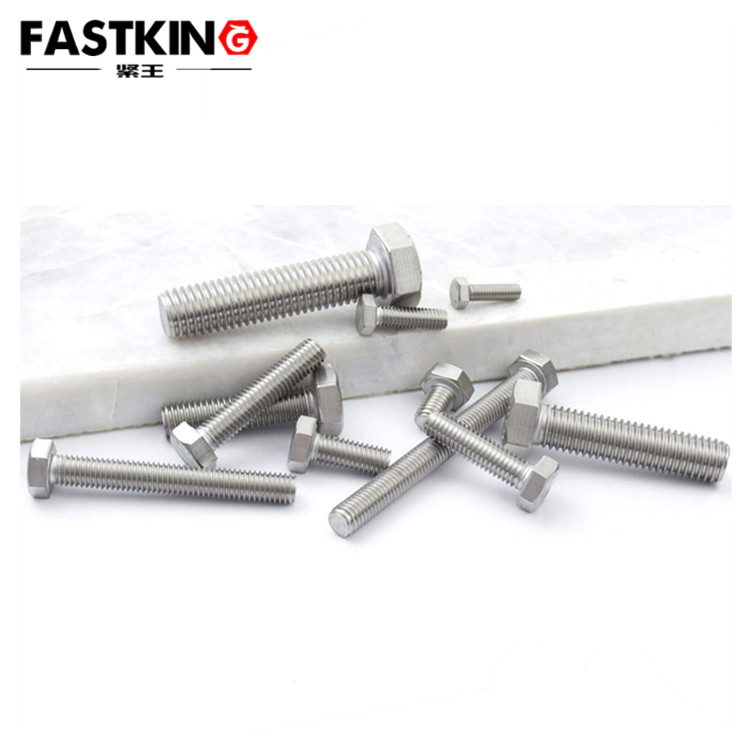In the fields of mechanical manufacturing and engineering construction, hexagon head bolts are extremely important fasteners. They are widely used in various fields due to their simple structure, ease of operation, and high strength. These fasteners with hexagonal heads, with their excellent mechanical properties and convenient installation characteristics, play a key role in various engineering structures.
I. Technical Characteristics of Hexagon Head Bolts
Hexagon head bolts are manufactured using cold heading processes, with precise dimensional tolerances and strict surface treatment standards. The hexagonal head design facilitates installation and removal with common tools while providing a large wrenching contact area, capable of withstanding significant tightening torque. The bolt shaft is available in full-thread or partial-thread designs, depending on specific application requirements.
In terms of material selection, hexagon head bolts are typically made from carbon steel, alloy steel, or stainless steel. High-strength grades undergo heat treatment to achieve mechanical properties of up to 8.8, 10.9, or even 12.9 grades. Surface treatments include galvanizing, Dacromet, and hot-dip galvanizing, offering excellent corrosion resistance.
The specification system is comprehensive, covering common sizes from M5 to M64, with lengths ranging from 20 mm to 500 mm. Custom sizes can be made to meet specific engineering needs. Each size has clear technical parameters, including tensile strength, yield strength, and hardness, ensuring reliability in use.

II. Proper Usage Methods and Operational Tips
Tool selection is the first step in using hexagon head bolts. It is essential to use wrenches, box-end wrenches, or socket wrenches that match the bolt size. For batch assembly operations, it is recommended to use electric wrenches with torque control, which can improve efficiency and ensure assembly quality.
Torque control directly affects connection quality. It is advisable to refer to relevant standards or torque parameter tables provided by manufacturers and use a torque wrench for precise control. For critical connections, torque marking and rechecking are recommended to ensure that each connection point meets the design requirements.
Preventing loosening is key to ensuring long-term reliability. Common anti-loosening methods include using spring washers, double nuts, or threadlock adhesives. In vibration-prone environments, it is recommended to use bolts with pre-applied anti-loosening adhesive or special anti-loosening structural designs. Regular inspection and maintenance are also essential.
III. Typical Application Scenarios and Case Analysis
In steel structure projects, hexagon head bolts are used in key areas such as beam-to-column connections and node fixations. For example, a sports stadium project used tens of thousands of high-strength hexagon head bolts for steel structure connections, ensuring the overall stability and safety of the building.
Mechanical equipment manufacturing is another significant application area for hexagon head bolts. They are used in everything from heavy machine tools to precision instruments. A brand of CNC machine tool, for example, used high-strength hexagon head bolts in critical parts, combined with special anti-loosening treatment, to ensure the precision stability and service life of the equipment.
In bridge engineering, hexagon head bolts are used in key areas such as steel box girder connections and bearing fixations. In a cross-sea bridge project, high-strength hexagon head bolts with special corrosion-resistant treatment were used to ensure the long-term reliability of the bridge in harsh marine environments.

As a fundamental connecting component in modern industry, the performance and application level of hexagon head bolts directly affect the quality and reliability of the entire project. With the continuous application of new materials and processes, the performance of hexagon head bolts will continue to improve, and their application fields will expand. In the fields of engineering construction and equipment manufacturing, this classic fastener will continue to play an important role, providing reliable connection solutions for industrial development.
